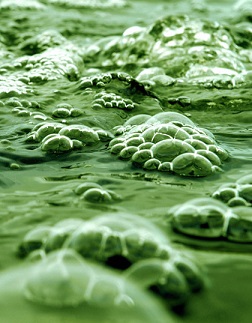Fuel found in waste ponds
 Experts are working on ways to harvest biofuel from wastewater ponds.
Experts are working on ways to harvest biofuel from wastewater ponds.
High-rate algal ponds (HRAP) use algae and bacteria to treat the wastewater at two regional South Australian locations at Kingston-on-Murray and Peterborough.
At these sites, researchers have developed a new system using slaked lime and magnesium concentration to concentrate the microalgae-rich biosolids produced in the HRAP.
As part of the program, chemical reaction modelling has been used to optimise the processing and evaluate the cost of chemicals.
“This autoflocculation process was successful in harvesting the biosolids while significantly reducing the turbidity, nutrients and E. coli contamination left in the wastewater,” says lead author Dr Paul Young.
These sustainable, low-energy systems are cost effective to run, and the capital cost of construction is about 40 per cent of the previous system for effluent-only schemes, and marginally higher for blackwater schemes, the Flinders University research has shown.
While a conventional system requires 66 days to treat the wastewater, HRAPs can perform a similar level of treatment in 5-10 days.
Its ability to remove pathogens is equal to, or better than, existing wastewater systems, Professor Fallowfield said after an earlier Flinders University study compared the Loxton-Waikerie District Council trial site at Kingston-on-Murray with a conventional system.
Professor Fallowfield says the latest study for the first time shows the HRAP wastewater treatment system could also be used to efficiently harvest microalgae grown in a low-cost environment – without the need for further investment in expensive infrastructure.
“The integration of treatment and biosolid recovery offers new configurations for the operation of HRAP-based wastewater treatment systems,” he says.
The full article is accessible here.








 Print
Print